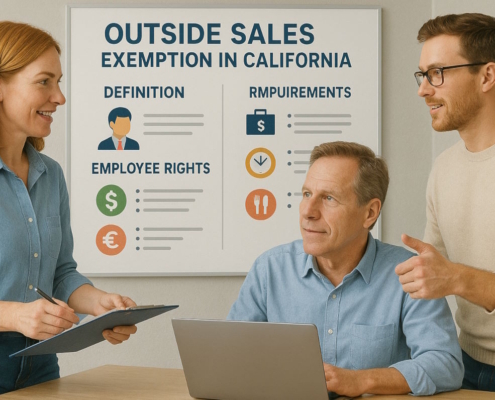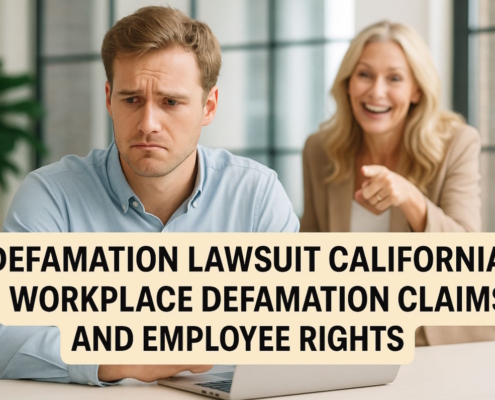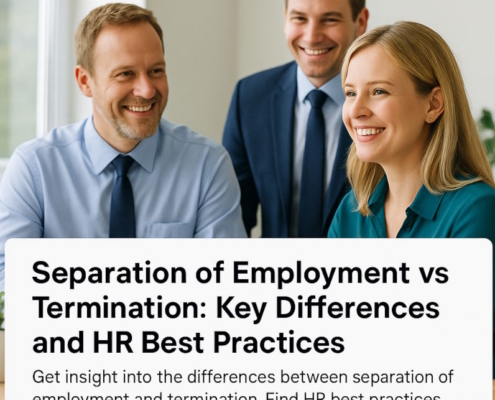Introduction
The noncompete and nonsolicitation contracts/agreements that limit the freedom of workers to change their jobs have gained more spotlight in the recent past.
Despite the Federal Trade Commission’s proposal to outlaw noncompete agreements, the Department of Justice and various other organizations have been examining nonsolicitation agreements, another kind of restricted contract. According to their analysis, these clauses should be examined more closely by both employers and workers.
Nonsolicitation Agreement Types: Customers and Workers
Nonsolicitation agreements can be divided into two categories. Charles Graves, a visiting professor at the College of the Law (University of California), San Francisco, says that the first type of nonsolicitation agreement is when one party, either a worker or another business, commits to not pursuing a company’s clients.
The subsequent type of scenario occurs when a party vows not to pursue workers at a business.
In reality, nonsolicitation clauses of both kinds (as well as other restrictive covenants) may be found in contracts. However, Graves notes that each has distinct ramifications and that courts approach their assessments differently when they are contested.
1. Use of Nonsolicitation Agreements with Customers
A lot of workers might think that a nonsolicitation agreement only applies to customers in the same industry. However, according to Graves, nonsolicitation agreements are not restricted to sales pitches made on behalf of the former employer’s rivals; they can be applied to every sales pitch made to past customers.
A computer marketer quitting her job to market office supplies is one example. She may not be allowed to sell products to the previous employer’s customers under a broadly worded nonsolicitation agreement, given that her current employer isn’t in the supply industry.
2. Implementing Nonsolicitation Agreements for Employees
Coworker nonsolicitation contracts, sometimes known as employee nonsolicitation agreements, forbid trying to hire employees of one firm for another.
These arrangements, however, have wider uses. According to Graves, even proposing that someone quit a bad workplace or request a raise could violate a nonsolicitation agreement.
Nonsolicitation Agreement Is Distinct From Nondisclosure Requirement
Imagine this: A worker is under both a nonsolicitation agreement and a nondisclosure agreement, and when they depart. They do not take classified documents when they depart, but, in a new position, they gather data from their old employer’s website to develop a customer list.
Does the worker have any obligations to their previous employer? Most likely, yes.
Many employees wrongly feel that, because they have utilized publicly accessible data to find out their prior employers’ customers, they have not infringed the nonsolicitation agreement.
However, the nonsolicitation agreement does not care whether or not somebody kept their promise to protect private information or trade secrets. The two contracts have fundamentally independent grounds of liability.
How Courts Analyze Nonsolicitation Agreements with Customers
Courts often require these arrangements to contain reasonable limitations about their duration, geographic scope, and connection to an employer’s business, much like they do when evaluating noncompete agreements.
The majority of client non-solicitation agreements have a one-year restriction on former workers. However, when it pertains to the geographic restriction, bigger businesses frequently claim that their clientele is “national.” Usually, courts reject this aspect and accept this claim.
Courts do apply that condition (so that the salesperson may be permitted to pitch customers’ office supplies) with regard to the connection between the employer’s business and the terms of the contract, but there is no assurance.
How Courts Examine Nonsolicitation Agreements with Coworkers
Graves said courts frequently don’t explain why they enforce these agreements.
Some courts use the law on trade secrets as support, although the two legal systems are distinct and offer no convincing argument for merging them. Coworker nonsolicitations have been upheld by different courts because these agreements safeguard businesses’ reputation with their clients.
The true reason seems to be that they are a holdover from the medieval era, when employers were unable to persuade workers to quit their employers and begin working for them. Additionally, judges have upheld this custom without considering its applicability in the modern labor market.
Nonsolicitation Contracts Could Be in Violation of Antitrust Laws
The United States Department of Justice has been filing criminal charges against certain firms in recent years, claiming that they conspired with other businesses to utilize “no-poaching” arrangements in violation of federal antitrust laws. Similar measures have been taken by other states.
Federal attorneys have been failing these prosecutions up to this point. United States v. DaVita, the initial criminal case involving a no-poach agreement, went to trial in April 2022, and the accused were found not guilty by the jury. Then, in a related case a year thereafter, a court cleared the defendants.
Nonsolicitation agreements may be unlawful if businesses use them to split a labor market, even if courts are establishing a high standard and they don’t seem to automatically breach antitrust law.
Given the DOJ Cases, Businesses Should Examine Contracts
Nonsolicitation agreements, which limit what a worker can do after they leave a company, are often thought of as an adjunct to employment agreements. However, what happens when businesses temporarily share resources and personnel as part of a joint venture? These partnerships might be more complex than they have historically been, as seen by DaVita and the associated litigation.
For instance, government contractors frequently supply government departments with staff members who possess specific knowledge or services that the agency would not typically have.
Even if companies compete with one another for other projects, government contractors often submit joint bids due to the size of such contracts, pooling their workforce for certain contracts. As a result, these team members frequently incorporate nonsolicitation clauses in their partnership contracts.
Stern and associates examined the DaVita court’s ruling that businesses cannot utilize nonsolicitation agreements to segment the labor market in a piece of writing. Nonsolicitation agreements, however, might be appropriate in that kind of situation since they are a component of a broader competitive system rather than a move by businesses to stifle competition. Companies may still be held civilly liable for such a contract even if they are not charged with a crime.
Consequently, pro forma nonsolicitation clauses in partnership agreements and other cooperative contracts ought to be eliminated. Stern suggests that nonsolicitation clauses be customized to the particular contracts in question, restricting the kind of activity, pertinent client, and time frames.
Businesses should also examine form agreements since boilerplate contracts, which are typically not reviewed, may contain harmful clauses, she says.
The Prospects of Nonsolicitation Agreements
The enforcement of the laws may soon alter, so both managers and staff members ought to be paying attention.
According to Graves, those who continue to believe that restrictive covenants are necessary should consider California, which forbids both types of nonsolicitation agreements and boasts the fifth-largest economy in the world, partly because it gives both employees and customers the freedom to choose.































